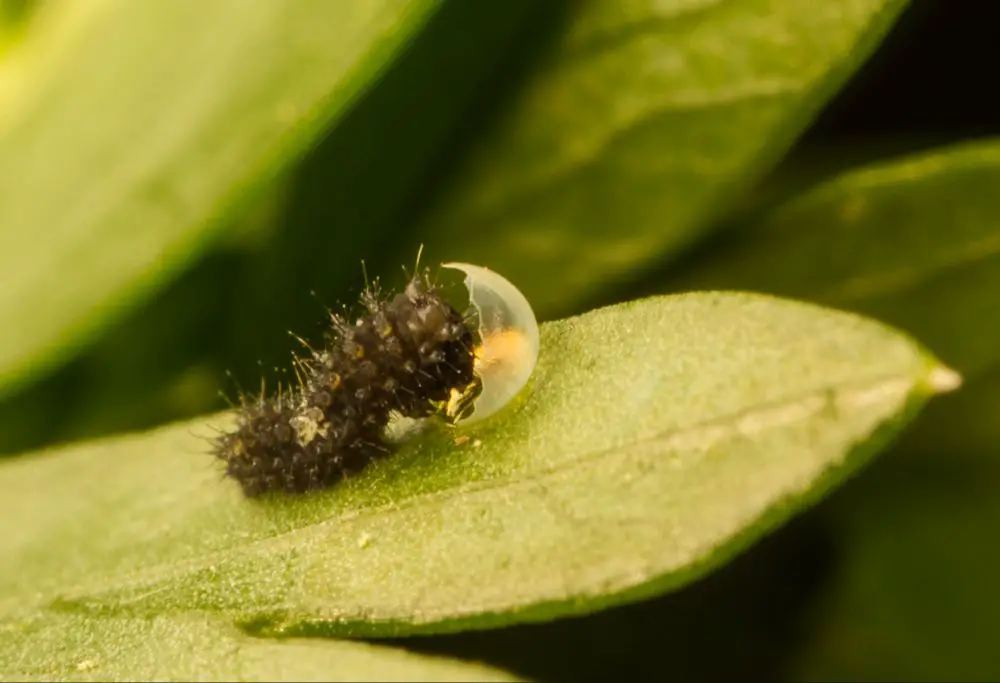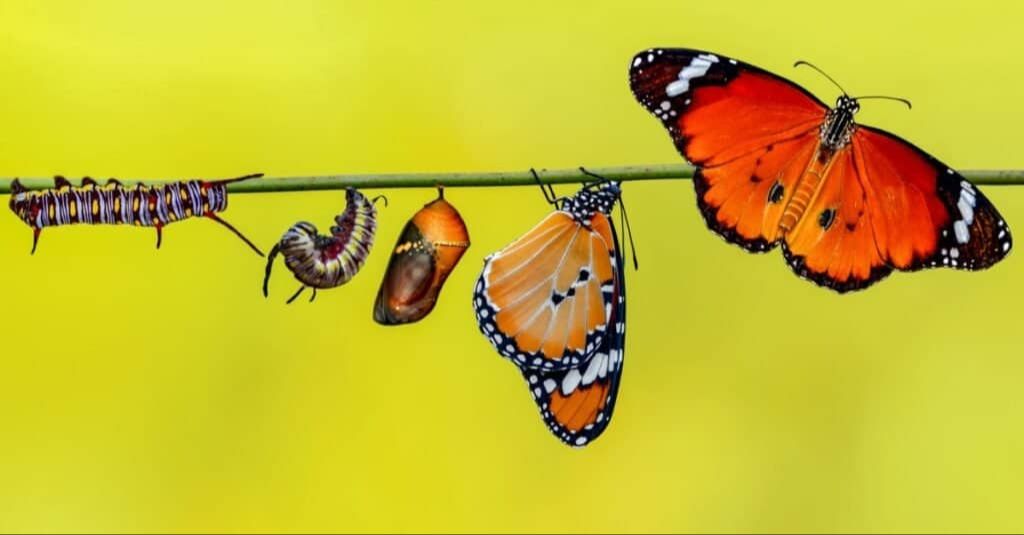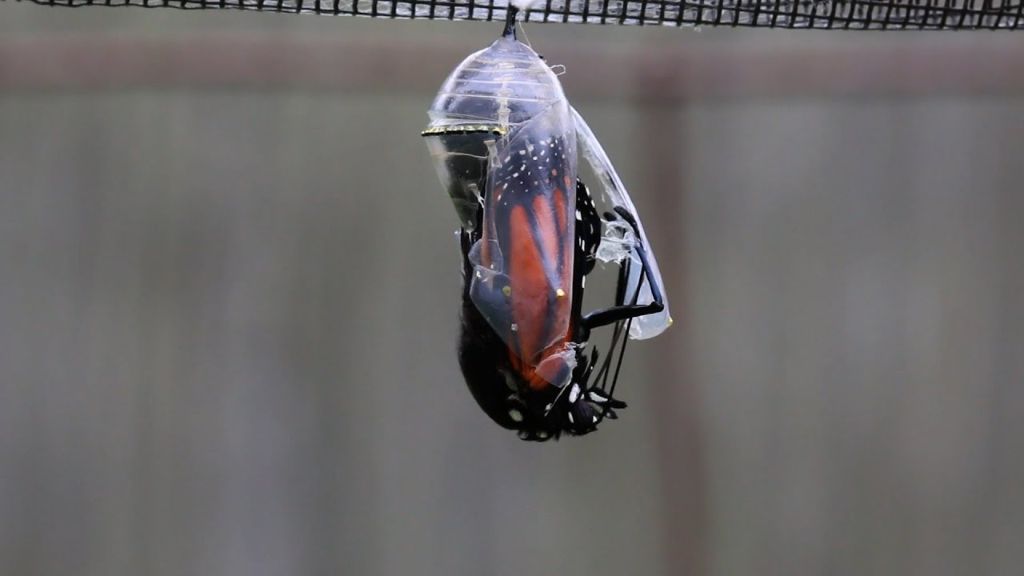Metamorphosis is a fascinating natural process whereby organisms develop distinct larval and adult forms. The insect order Lepidoptera, which includes moths and butterflies, goes through a complete metamorphosis from egg to larva to pupa and finally, the adult butterfly. This incredible transformation from a crawling caterpillar to a beautiful flying butterfly is one of the most remarkable metamorphoses in the animal kingdom.
During metamorphosis, caterpillars essentially turn into liquid before reforming into butterflies. It is a complex and intricate process that results in a completely different creature than what emerged from the egg. Through hormonal changes, most of the caterpillar’s tissues are broken down and reassembled into the adult butterfly form. This allows the switch from chewing mouthparts in the caterpillar to sucking mouthparts in the butterfly. Metamorphosis occurs within the protective cocoon spun by the caterpillar in the pupal stage. When the adult butterfly emerges, it has large, patterned wings to fly in search of food and mates.
Egg
Butterfly eggs are very tiny, often less than 1 millimeter in diameter. They can be various colors like green, white, or yellow. The eggs have a hard outer layer that protects the developing caterpillar inside. Monarch butterfly eggs are laid singly on milkweed leaves. Within 3-5 days, the caterpillar embryo develops and hatches out of the egg [1].

When ready to hatch, the caterpillar chews its way out of the egg shell. It immediately starts eating the milkweed leaf it was laid on. Caterpillars need to eat constantly to fuel their growth. They munch on milkweed leaves and spend all their time eating and growing bigger.
Caterpillar
Caterpillars, the larval stage of butterflies and moths, are fascinating creatures. A caterpillar hatches from an egg and its main purpose is to eat and grow. Caterpillars have long, segmented bodies with three sets of true legs on the thorax and several pairs of short, stubby prolegs on the abdomen. The caterpillar’s body is covered in setae, hair-like projections that are sensitive to touch, taste, and smell, helping it find food.
Caterpillars have powerful jaws called mandibles that they use to chomp on leaves. A caterpillar’s main activity is eating plant material to fuel its growth. Caterpillars can increase body mass several thousand times from when they first hatch before forming the pupa or chrysalis. Some species are herbivorous, feeding only on specific host plants, while others are more generalized feeders. Caterpillars often have bright colors or patterns that camouflage them or signal to predators that they are toxic or distasteful. They spend most of their time voraciously eating and growing, storing up energy for the butterfly they will become.
Pupa
The pupa stage is a time of transition for the caterpillar. Inside the protective shell of the chrysalis, the caterpillar’s body breaks down and reforms into the body of an adult butterfly (or moth). This process is called metamorphosis.

During the pupal stage, most of the caterpillar’s tissues and organs are broken down by enzymes into a nutrient-rich soup. This allows for the regeneration of cells into the organs and features needed for the butterfly or moth, such as wings, legs, eyes, and genitalia. The duration of the pupal stage varies by species, lasting anywhere from 9 days to 9 months depending on factors like temperature.
On the outside, the chrysalis protects the vulnerable pupa as the reorganization is taking place inside. The chrysalis is usually camouflaged to avoid predation during this stage when the insect cannot move or feed itself. When the metamorphosis into an adult is nearly complete, pigmentation and features will become visible through the now transparent chrysalis shell.
Emergence from the chrysalis, called eclosion, signifies the end of the pupal stage and the beginning phase of adulthood for the butterfly or moth.
Butterfly Metamorphosis
Butterflies undergo complete metamorphosis inside the chrysalis in a process called holometabolism. This involves four main stages: egg, larva (caterpillar), pupa (chrysalis), and adult butterfly. Metamorphosis refers to the process in which the caterpillar’s body transforms into an entirely different adult form inside the pupa.1
Inside the chrysalis, the caterpillar tissues and organs break down into an undifferentiated mass of cells called imaginal discs. Then, the imaginal discs use the nutrients from the broken-down larval parts to build the familiar body parts of the adult butterfly, such as the wings, legs, mouthparts, and compound eyes. This reorganization process inside the pupa leads to the emergence of the adult butterfly.
The duration of the pupal stage varies for different species. Butterflies like monarchs may spend just 10 to 14 days inside the chrysalis while other butterflies can remain in this stage for several months, depending on environmental factors like temperature and location.
Butterfly Anatomy
Butterflies have a complex and unique anatomy that allows them to go through their metamorphic life cycle. Adult butterflies have three main body parts: the head, thorax, and abdomen.
The head contains the brain, eyes, antennae, and mouthparts. The eyes are compound and allow the butterfly to see in all directions. The antennae are important sensory organs that detect smells and vibrations. The mouthparts consist of a long proboscis that the butterfly uses to drink nectar.
The thorax contains three segments, each with a pair of legs. The wings and wing muscles also attach to the thorax. Butterfly wings are covered in tiny scales that give them their colorful patterns. The forewings and hindwings on each side are held together by a small hook called a frenulum.
The abdomen contains the digestive and reproductive organs. Butterflies breathe through small openings called spiracles along the sides of the abdomen. The end of the abdomen also contains external genitalia that allow butterflies to mate.
Overall, the anatomy of butterflies allows them to fly, locate food, reproduce, and survive the various stages of metamorphosis from egg to adult. Their specialized structures are precisely adapted for their way of life (See diagram of a monarch butterfly: https://pulpbits.net/5-pictures-of-monarch-butterfly-body-parts/diagram-of-a-monarch-butterfly/).
Eclosing from Chrysalis

The final stage of metamorphosis occurs when the butterfly emerges from its chrysalis as an adult. This process is called eclosion or eclosing. When the butterfly is ready to emerge, its chrysalis becomes transparent and the butterfly’s wings can be seen inside. The butterfly will then push against the chrysalis to break it open.
First, the butterfly uses its swollen abdomen to split the chrysalis open along the seam. Then it will slowly emerge through the opening, clinging to the empty shell. At this point, its wings are small, shriveled and wet. The butterfly will hang in place for several hours while blood pumps through its wings to expand them. Slowly its wings will unfurl and take shape. It may flutter them frequently to help with circulation and drying.
Once its wings are fully open and dried, the butterfly is ready for its first flight. This entire emergence process can take anywhere from a few minutes to several hours depending on the species. When it emerges, the adult butterfly is fully grown and sexually mature. Eclosing from the chrysalis is the final major milestone in the transformation from egg to caterpillar to pupa and finally to winged adult.
First Flight
A butterfly’s first flight occurs shortly after it emerges from its chrysalis as an adult. The butterfly’s wings are wet and crumpled initially, so it needs time for them to expand and dry before taking off [1]. This process usually takes about an hour. Once its wings are ready, the butterfly will make its maiden voyage [2].

A newly emerged butterfly’s first flight is understandably shaky and unstable. It flutters and bobs around clumsily as it works the flight muscles and gets a feel for its wings. The butterfly may only fly short distances at first, about 5-10 feet high off the ground. Within a day or two of practice, it becomes adept at flying [1].
In its initial flights, the butterfly will seek out food sources like nectar to replenish its energy after metamorphosis. It starts the search for mates shortly after as well. Its primary goal in the first day of life as a butterfly is to feed and find a mate to reproduce [2].
Once it can fly skillfully, the butterfly is ready to leave its emergence site and venture out into the wider world. This maiden voyage marks the beginning of its new adult life spending the days fluttering among flowers and migrating during its brief lifespan.
Butterfly Behavior
Butterflies exhibit common patterns of behavior. They will spend most of their time feeding on nectar from flowers. Butterflies use their long, tube-like proboscis to drink the nectar [1]. When not feeding, butterflies bask in the sunlight to raise their body temperature for flight. Butterflies are diurnal, meaning they are most active during the day.
Mating is an important behavior for butterflies. In many species, females mate soon after emerging from the chrysalis. Males emerge first in order to be ready to mate with females when they eclose. During mating, the male and female join their bodies, allowing the male to pass sperm to the female [2]. Butterflies utilize visual cues like wing color patterns along with chemical pheromones to locate mates [3].
Life Cycle Summary
In summary, the life cycle of a butterfly undergoes complete metamorphosis in four main stages: egg, caterpillar, pupa, and adult butterfly. It starts when a female butterfly lays eggs on the leaves of host plants. The eggs hatch into caterpillars, which feed and grow rapidly. The caterpillar then forms a protective chrysalis or pupa around itself. Inside the pupa, the caterpillar essentially turns into liquid as its body undergoes an incredible transformation known as metamorphosis. Eventually, the adult butterfly emerges from the pupa, having developed its wings and other adult characteristics during metamorphosis. It is now ready for flight and will live the rest of its life searching for food and mates. The butterfly life cycle is a fascinating process of transformation that begins with a tiny egg and ends with a beautiful, winged adult.
To recap the key stages:
- Egg – laid on leaf by female butterfly
- Caterpillar – hatches from egg, eats and grows
- Pupa – caterpillar forms protective chrysalis/pupa
- Metamorphosis – caterpillar transforms to butterfly inside pupa
- Adult butterfly – emerges from pupa with wings ready to fly
The diagram below provides a visual summary of the complete transformation from egg to caterpillar to pupa to beautiful winged adult butterfly:
It’s truly amazing that the tiny caterpillar can undergo such a massive change into a butterfly during the pupa stage. The metamorphosis inside the chrysalis is one of nature’s great wonders and highlights the incredible transformations that are possible in life.
